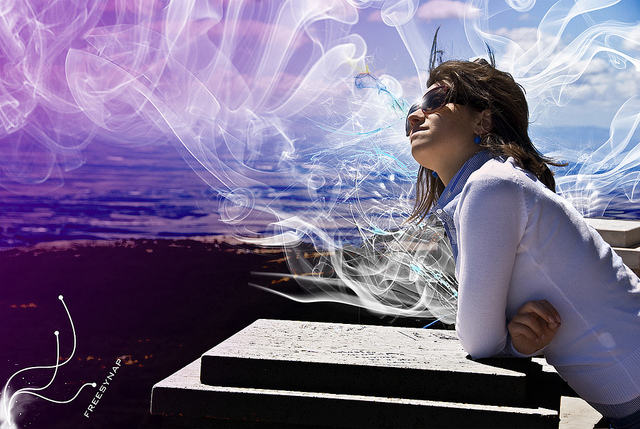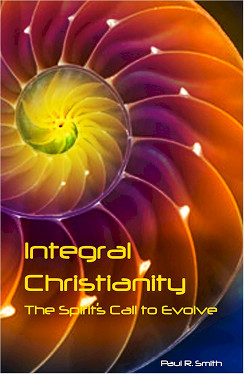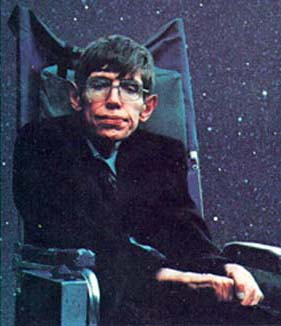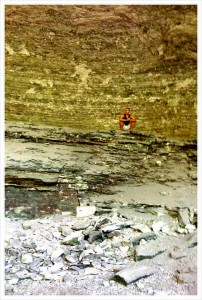Interview with Paul Smith, Author of Integral Christianity: The Spirit’s Call to Evolve
I am really excited to bring this particular podcast episode to you guys this week! It’s a timely release, this being traditionally Holy Week, when Christians around the world reflect on Jesus’ crucifixion and resurrection. It is possible to understand this powerful story as representing the death of deeper, higher orders of Truth at the hands of lower, more shallow truths. Indeed, we see Jesus as a shining example of life lived in the heat of the friction between what we see as the default position of biological evolution and the alternative expression of Creative Evolution. My own personal relationship with Jesus is revealed as I seek daily guidance in understanding my mechanical nature and in allowing my inner creativity to rise to the surface.
So in honor of Holy Week, I am bringing you guys my conversation with Reverend Paul Smith. He has been a pastor at Broadway Church in Kansas City, MO for almost 50 years, and he is the author of a new book called Integral Christianity: The Spirit’s Call to Evolve. Paul and I have a special connection: his church is the first church I ever attended. Born in Kansas City, I went to Broadway Church with my parents until we all moved to Arkansas when I turned 6. Since that time Paul and I both have walked the path of creative evolution, and we both have ended up embracing Christianity in a way few today dare speak about. Have a listen to our dialogue, and by all means pick up a copy of Paul’s book today! E-mail me or comment on the post below if you have any thoughts about our discussion.
Alternative content
Download To Your Computer (runs about forty-five minutes)
- Introduction — 00:00 – 02:12
- The Three Faces of God — 02:12 – 11:45
- Reading the Bible as a Stage-Development Chronicle — 11:45 – 15:25
- Jesus, Lazarus and Creative Evolution — 15:25 – 26:03
- Where We Were, Where We Are, and Where We’re Going — 26:03 – 33:45
- Paul’s Background — 33:45 – 42:07
- Closing — 42:07 – 44:12
Integrating Asana, Vinyasa, and Prasara in Yoga Posture Practice
First off, I just wanted to say that Matt and I have been knee deep since the beginning of the year in creating the Circle Yoga Shala 500-Hour Teacher Training curriculum, so we’ve been quiet in terms of blog posts. We plan to get back into a regular posting rhythm as the demands of that project lessen. In the mean time, I wanted to address a couple of questions from one of our readers, Damon. In response to my article on the integration of prasara into a more traditional asana/vinyasa practice, Damon wrote:
Ok so how would suggest combining an asana/vinyasa/prasara practice? And what place would you give to other Sonnon practices such as Intu-Flow and Flowfit? Could you give an example of how you might work these practices together over a week/month. And which of them, if any, you would regard as redundant.
I responded briefly to his comment on the post itself, but I wanted to take a more in-depth look at these questions in a proper post, so here we go. I’ll do this by looking specifically at the thinking behind my upcoming hatha yoga training cycle. Read more >>
The Highly Played Game of As If – Episode One: The Miracle at the Pool of Bethesda

Matt and I just finished recording the first episode of The Highly Played Game of As If: A Podcast Exploring Creativity in the Light of Sacred Texts. In it we look specifically at a story from the Gospel of St. John, interpreting it in the style of Maurice Nicoll, a British psychologist and student of Carl Jung and G. Gurdjieff. Our conversation includes a brief introduction to the underlying concepts — which you can read about more at the post, Introducing the Highly Played Game of As If — as well as our analysis of the Miracle at the Pool of Bethesda, from John Chapter 5.
As I said, our commentary stands on the high shoulders of the British psychologist, Maurice Nicoll, who wrote a ground-breaking book called The New Man, in which Nicoll offers a number of deep insights into the parables and miracles of Christ as described in the New Testament Gospels of the Christian Bible. Below you’ll find an inline flash player loaded with our talk, as well as a link to the audio file and a brief play-by-play outline of what went down.
Alternative content
Download Episode One (runs about one hour and four minutes)
- Introduction to the Game of As If — 00:00 – 26:30
- Reading of the Miracle at the Pool of Bethesda — 26:30 – 28:30
- The Sheep-Gate and the Five Porches: Being Led by Our Senses — 28:30 – 36:45
- The Stirring of the Pool: Water as a Symbol for Living Truth — 36:45 – 41:10
- The First Man: Receptivity, Readiness, and Disposition Toward Living Truth — 41:10 – 47:10
- The Sick Guy, His Bed and the Presence of Jesus: Being Touched by the Good of the Truth — 47:10 – 01:03:30
- Closing — 01:03:30 – 01:04:30
Introducing “The Highly Played Game of As If”

We talk a lot on this blog about the uniqueness of humanity. I believe, as indicated in the introduction to our theory, that we owe this to our “really badass imaginations.” Think about it — how long did it take you to come up with a reason why that guy insisted on tailgating you all the way to work last week? Were his actions potentially excusable because he was surely going to the hospital to see a loved one, or was he completely out of line and most likely a total asshole?
We love to jump to conclusions, and we can do this because we have a highly evolved ability to conceive orders of scale, which is to say, the human being is alone in the known universe in his ability to hold in his mind’s eye a progression, succession, or graduated series of related steps or degrees, including both steps externally perceived and steps internally imagined or extrapolated. This skill is at the same time enormously useful and tragically fallible. It is fallible for one simple reason: we’re limited by what we can see, hear, touch, taste, and smell. Beyond that, we have to make something up … or throw our hands in the air and walk away.
This is particularly frustrating when it comes to the big questions — like meaning-of-life questions. How did we get here? Where are we going? What can we do to reach our greatest potential? We at the Creative Evolution Blog have thrown our hands up at these questions more times than we can count. We’ve felt like we were banging our heads against a wall and had to leave with our tails between our legs. Yet we’ve always come back to them, looking for some new vantage point, unable to pass life off as meaningless biological clockwork and at the same time unable to accept theological/doctrinal explanations at face value.
Between these two extremes lies what Joseph Campbell called a “highly played game of ‘as if.'” Campbell borrowed this concept from Immanuel Kant, who said the “proper expression of our fallible mode of conception” is to imagine the world and everything in it as if all of it were “derived from a supreme mind.” This is Campbell’s “highly played game of ‘as if,'” and it begins with the idea that we all have within us some divine seed or common source. It then plays itself out as we endeavor to act, think, and feel in new (unscripted) ways through body, mind, and spirit.
Read more >>
From Asana to Vinyasa to Prasara: The Evolution of a Modern Yoga Practice

Over the past 12 years or so, my yoga posture practice has changed dramatically. It all began when I walked into a Barnes and Noble bookstore in college and bought a beginner’s yoga book published by the Sivananda Yoga Center. The posture practice was a pretty standard, well-ordered sequence of asanas, preceded by one vinyasa (surya namaskar). This took me a long way toward exploring myself within the postures, but it wasn’t until I discovered “Power Yoga” that I found a way to become more immersed in some sort of connected flow through the entire practice.
During this time period (about eight years ago) I also discovered Godfrey Devereux’s Dynamic Yoga Method. Combining the energetic qualities of the bandhas and the spirals with the connective possibilities of vinyasas between asanas, I really felt like I had a fantastic, even fluid practice. However, it wasn’t until until the next novelty in my practice emerged that I discovered how truly connected and fluid a yoga posture practice could be.
Making Homemade Ghee from Unsalted Butter – myCreativeEvolutionTV Episode 1
 This is the first official episode of myCreativeEvolution Television. Woot!
This is the first official episode of myCreativeEvolution Television. Woot!
In this experiment, I’ll show you how to make your own ghee in your own kitchen from unsalted organic butter for less than half the price you’ll pay for it mail order over the Internet. Making your own Ghee is a super simple process, but it does require patience, and it will probably take you about 2 hours. Before we get to the video, though, let’s first establish what ghee is, and then talk a bit about the benefits of using ghee instead of butter or some other fat for cooking.
If you’ve taken a stab more than twice in your life at cooking Indian food, you’ve probably seen “ghee” in an ingredient list. And, if you’re like me, you just substituted butter, olive oil, or some other fat because you didn’t have any ghee, you didn’t know where to get any ghee, and you honestly weren’t exactly sure what ghee was at the time. That was me until rather recently.
Ghee is simply the Indian or Ayurvedic version of clarified butter, which is commonly used in French cuisine. What they do is cook all the water content out of the butter, as well as the milk solids, leaving pure fat — YUM! To make ghee, we’ll just cook the butter a bit longer than we would to make clarified butter. This toasts the milk solids (which settle at the bottom of the pan), and gives the ghee a wonderful, unique flavor.
In terms of the benefits of using ghee as opposed to some other fat in cooking, there are two different categories — verifiable and mumbo-jumbo. Since ghee has been a staple in Ayurvedic medicine for millennia, when you research its benefits, you’ll find a lot of anecdotal, hocus-pocus-y claims. I don’t mean to say I think these claims are all false, just that they are not really objectively verifiable. In the interest of honest inquiry, I have separated claims that are scientifically verifiable from those that are more, shall we say, esoteric.
Physical Disabilities, Motor Neuron Disease, and the Development of the Physical Body
“I am quite often asked: How do you feel about having ALS? The answer is, not a lot. I try to lead as normal a life as possible, and not think about my condition, or regret the things it prevents me from doing, which are not that many.”
– Steven Hawking
It may seem disingenuous to characterize physical development simply in terms of diet/nutrition, primal movement, and posture practice. The reality is that at least two of these strategies are completely dependent upon reasonable physical health. This might seem to mean that a large segment of the population – those with certain physical disabilities – would be rendered unable to participate in these activities and would therefore be unable to foster the kind of development in the physical realm that we talk about here at myCreativeEvolution.com.
I say, Not so fast. Let’s take a closer look:
A student brought up the specific example of Steven Hawking at a recent intensive retreat. We were discussing the model of the human being as having three aspects – the mind, the body, and the spirit – each requiring work in order to insure balanced development. His question was, “What about Steven Hawking? He can’t move his body at all? Can his development ever be seen in this model as balanced?”
Successful Retreat!
“Whatever you do, or dream you can, begin it. Boldness has genius and power and magic in it.”
– Often Attributed to Johan Wolfgang von Goethe
The first Creative Evolution Workshop/Retreat has officially come to a close. It was a beautiful experience for everyone involved, filled with emotions of all kinds, hard work, wistful playtime, and fantastic food. Check out the pictures at Circle Yoga Shala’s Facebook Page.
It Lives!
We’re now 19 days away from the first Creative Evolution retreat at Circle Yoga Shala. Matt and I were just joking today that we birthed this baby together — two proud daddies! Ain’t it cute?! Anyway, we’re really looking forward to it, and this blog is our way of extending the impact of these retreats and providing an ongoing proliferation of our collaboration.
So we hope you’ll take a few minutes to look around and be sure to check back often!
Get Updates Via E-Mail
What We Do
Start Here
Posts by Dimension
Posts by Subject
Posts by Practicality
Recent Posts
- Interview with Paul Smith, Author of Integral Christianity: The Spirit’s Call to Evolve
- Integrating Asana, Vinyasa, and Prasara in Yoga Posture Practice
- The Highly Played Game of As If – Episode One: The Miracle at the Pool of Bethesda
- Introducing “The Highly Played Game of As If”
- From Asana to Vinyasa to Prasara: The Evolution of a Modern Yoga Practice






